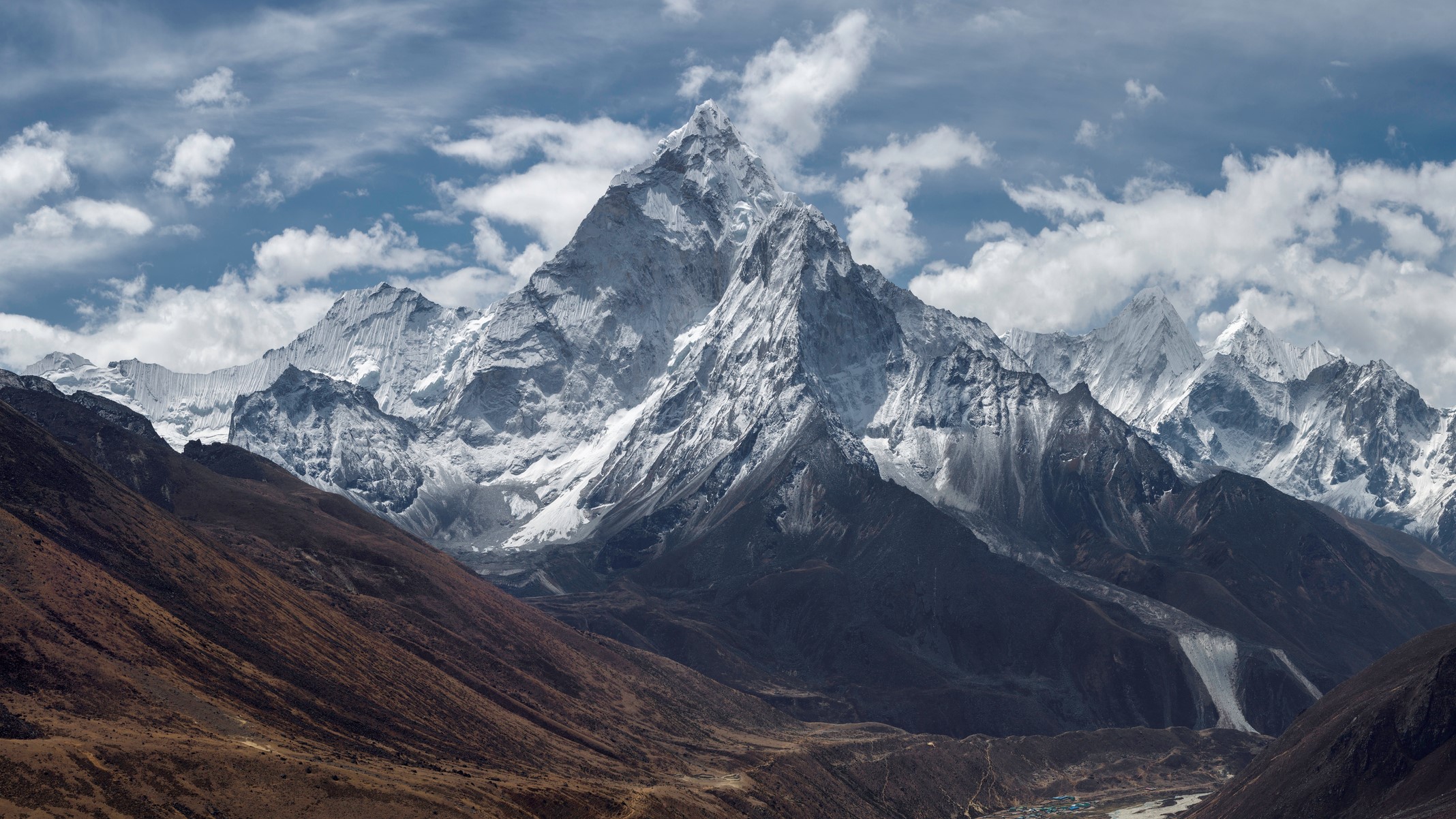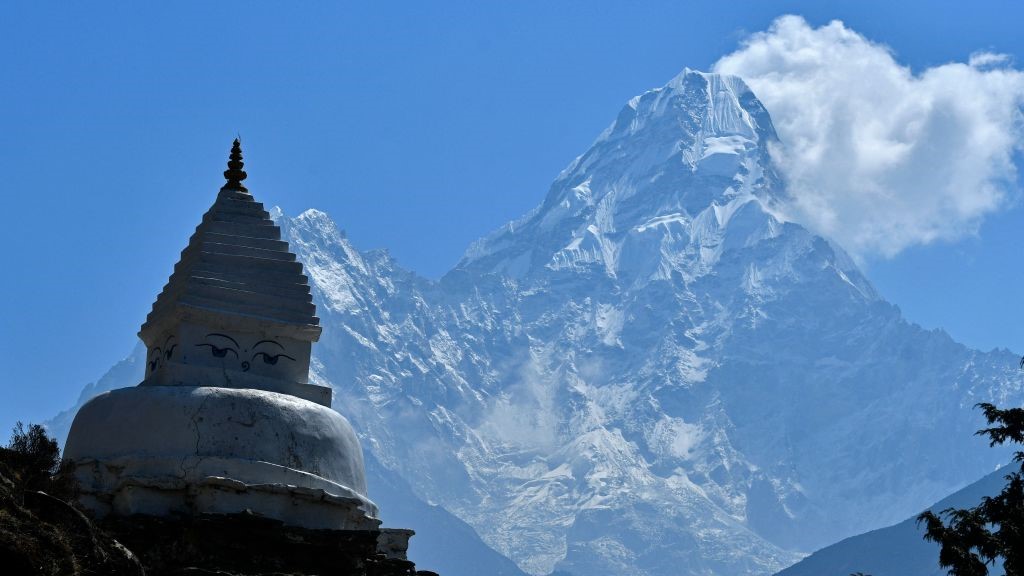A single massive tectonic collision? That's not how the Himalayas came to be, scientists say
The world's highest mountain system may have reached 60% of its current elevation before the Indian and Eurasian tectonic plates crashed into each other, giving the peaks an extra push.

The Himalayas, which include the world's tallest mountains, weren't born the way geoscientists thought. The tectonic plates that collided to form the peaks 45 million to 59 million years ago were already pushing against each other, causing the Himalayan mountains to rise to more than half their current elevation, before the big crash gave them a violent shunt upward, scientists say.
This means the iconic mountains may have started their ascent into the sky far earlier than previously believed — around 63 million to 61 million years ago — due to the subduction of the oceanic part of the Indian tectonic plate.
"Previously it was assumed that continent-continent collision (India plate with Eurasian plate) was required for such high elevation to be obtained," study lead author Daniel Enrique Ibarra, an assistant professor of Earth, environmental and planetary sciences at Brown University, told Live science in an email.
In a new study published Thursday (Aug. 10) in the journal Nature Geoscience, Ibarra and his colleagues found that the Himalayas attained roughly 60% of their current elevation before the continental plates collided. The discovery may influence our understanding of the region's climate in the past, they said, and challenge assumptions about how other mountainous areas, such as the Andes and the Sierra Nevada, formed.
Related: Is Mount Everest really the tallest mountain on Earth?
"Our study shows for the first time that the edges of the two tectonic plates were already quite high prior to the collision that created the Himalayas — about 3.5 kilometers [2.2 miles] on average," senior study author Page Chamberlain, a professor of Earth and planetary sciences at Stanford University, said in a statement.
The Himalayas now have an average elevation of 20,000 feet (6,100 meters) and host the world's tallest mountain, Mount Everest, which towers 29,032 feet (8,849 m) above sea level.
Sign up for the Live Science daily newsletter now
Get the world’s most fascinating discoveries delivered straight to your inbox.

The researchers reconstructed the mountain range's past by measuring the amount of different versions, or isotopes, of oxygen in its sedimentary rocks — a technique called triple oxygen analysis that is typically used to study meteorites.
The windward slope of a mountain — the first to be hit by air circulating around the mountain — gets more rain than the opposite side, known as the leeward slope. The chemical composition of this rain changes as the air moves up the windward slope towards the mountain's peak, with heavier isotopes of oxygen declining at lower altitudes and lighter isotopes dropping out near the top.
By tracking these changes, the researchers determined the historic altitude of rocks. They found the makeup around 62 million years ago was consistent with an elevation of 11,480 feet (3,500 m). "That's a lot higher than many thought," Ibarra said in the statement.
This initial uplift may have been caused by the oceanic part of the Indian tectonic plate, which at that time was pushing its way underneath the continental slabs at a low angle and forcing the overriding plate up.
So, "the oceanic part of the India plate initiated convergence," Ibarra told Live Science. "This gave the roughly 60% elevation that we find in our study."
A huge collision 45 million to 59 million years ago then forced the edges of the Indian and Eurasian tectonic plates up by an additional 0.6 miles (1 km), according to the study. These tectonic forces are ongoing and contribute to the growth of the mountains even today. "The final push is the onset (and continuation today) of continent-continent collision," Ibarra said.
The discovery could help explain several climatic phenomena, including the establishment of the east and south Asian monsoon system, according to the study.
"This new understanding could reshape theories about past climate and biodiversity," Ibarra said in the statement.

Sascha is a U.K.-based staff writer at Live Science. She holds a bachelor’s degree in biology from the University of Southampton in England and a master’s degree in science communication from Imperial College London. Her work has appeared in The Guardian and the health website Zoe. Besides writing, she enjoys playing tennis, bread-making and browsing second-hand shops for hidden gems.









